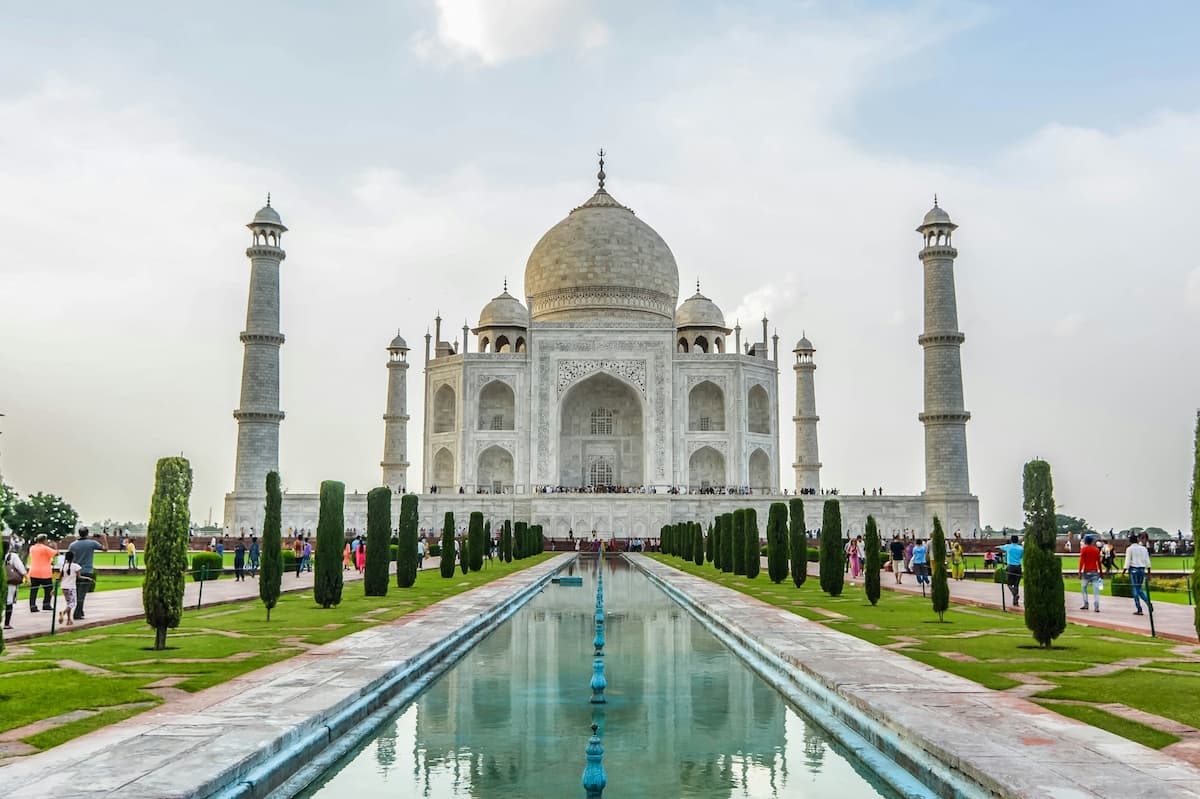
Built of marble, decorated with love – the Taj Mahal stands timeless even in the face of the waves of history.
Where Marble Meets Glory
The Taj Mahal is not just a building – it is an emotion carved in stone. Built in the 17th century, it continues to amaze architects and visitors today with its stunning symmetry, intricate carvings and gleaming white marble. This section sets the tone by presenting it as a symbol of eternal love, an architectural marvel and a piece of timeless poetry in physical form.
Table of Contents
ToggleThe Vision Behind the Wonder
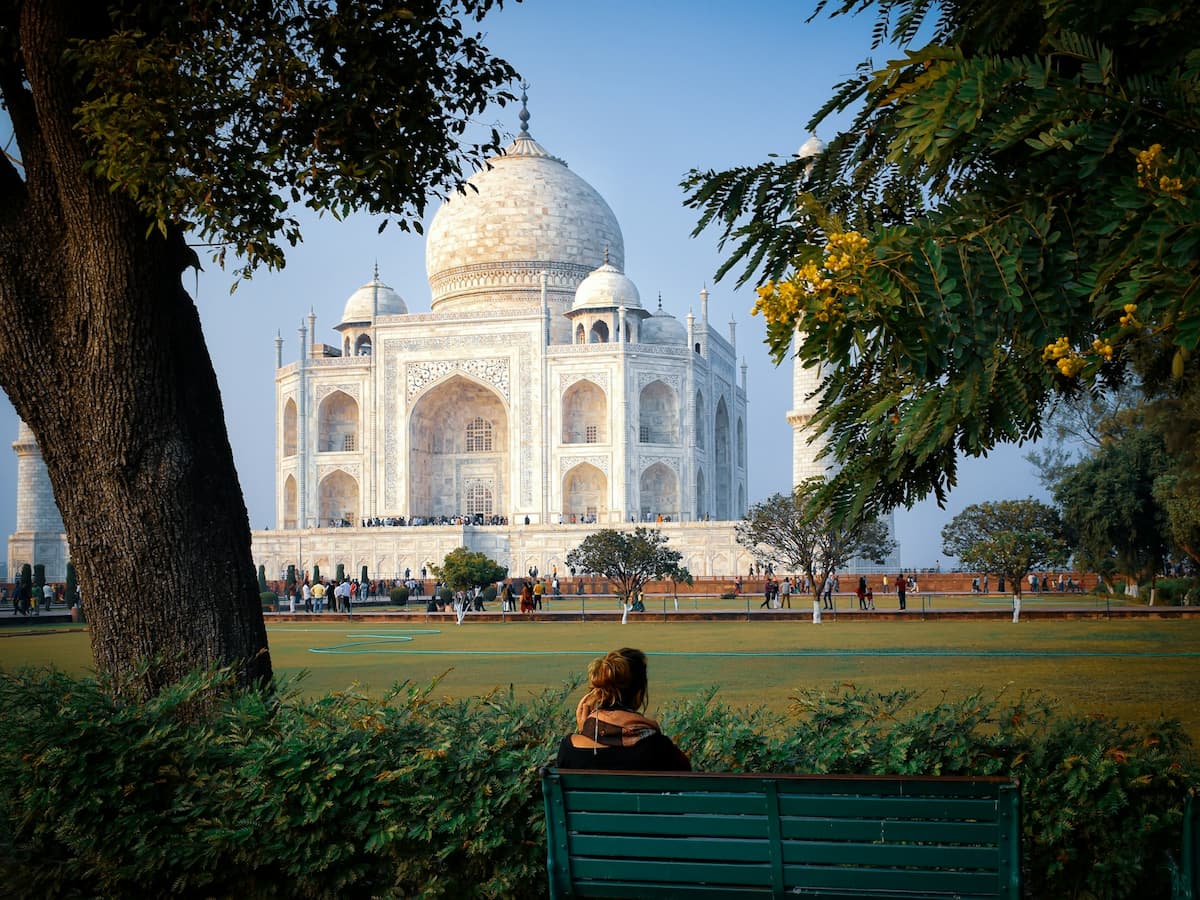
This section explains the Taj’s romantic background. After the death of his beloved wife Mumtaz Mahal during childbirth, Emperor Shah Jahan envisioned a mausoleum unlike any other, one that would honor her memory and reflect the depth of his love. This emotional premise guided every aspect of the design – from the materials chosen to the layout of the complex.
Design philosophy: Persian, Indian and Islamic blend
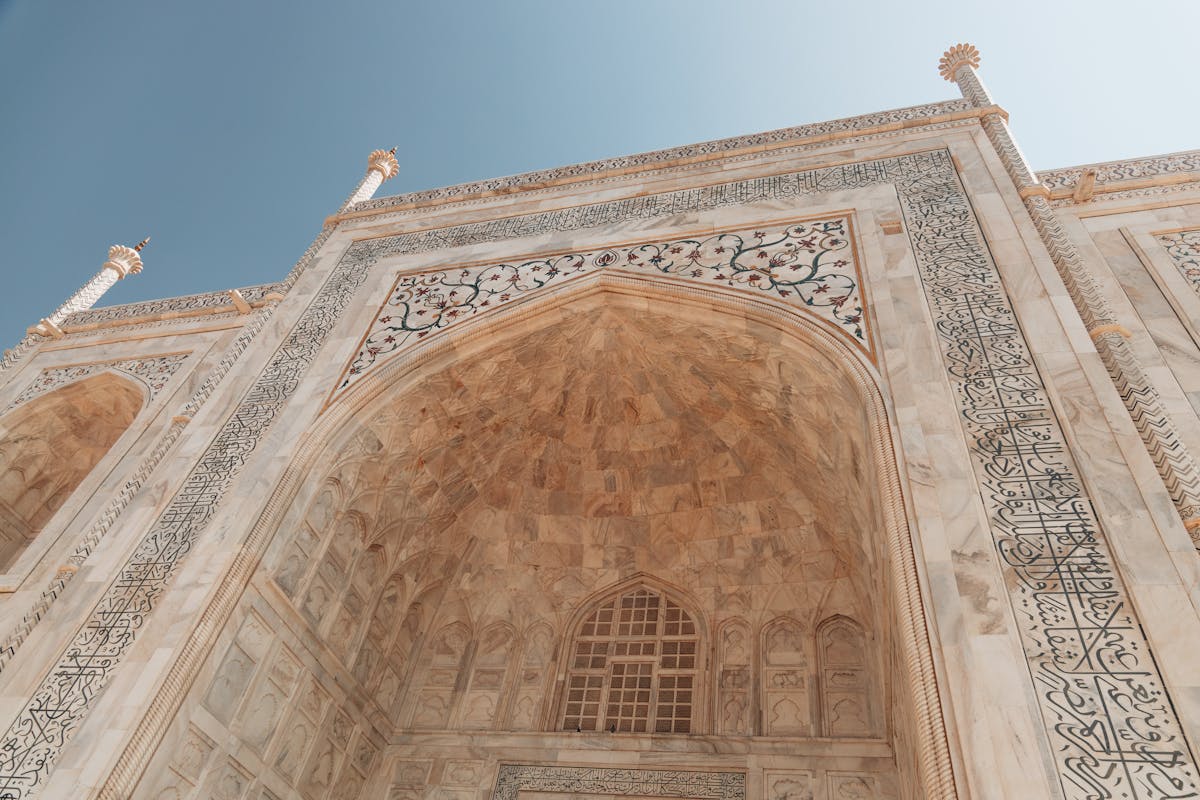
The Taj Mahal is a brilliant blend of three rich traditions:
Persian: bulbous domes, charbagh garden layouts
Indian: floral motifs, lotus shapes
Islamic: geometric patterns, Arabic calligraphy from the Quran. Everything is perfectly symmetrical, reflecting the Mughal ideal of balance and paradise.
Materials and craftsmanship
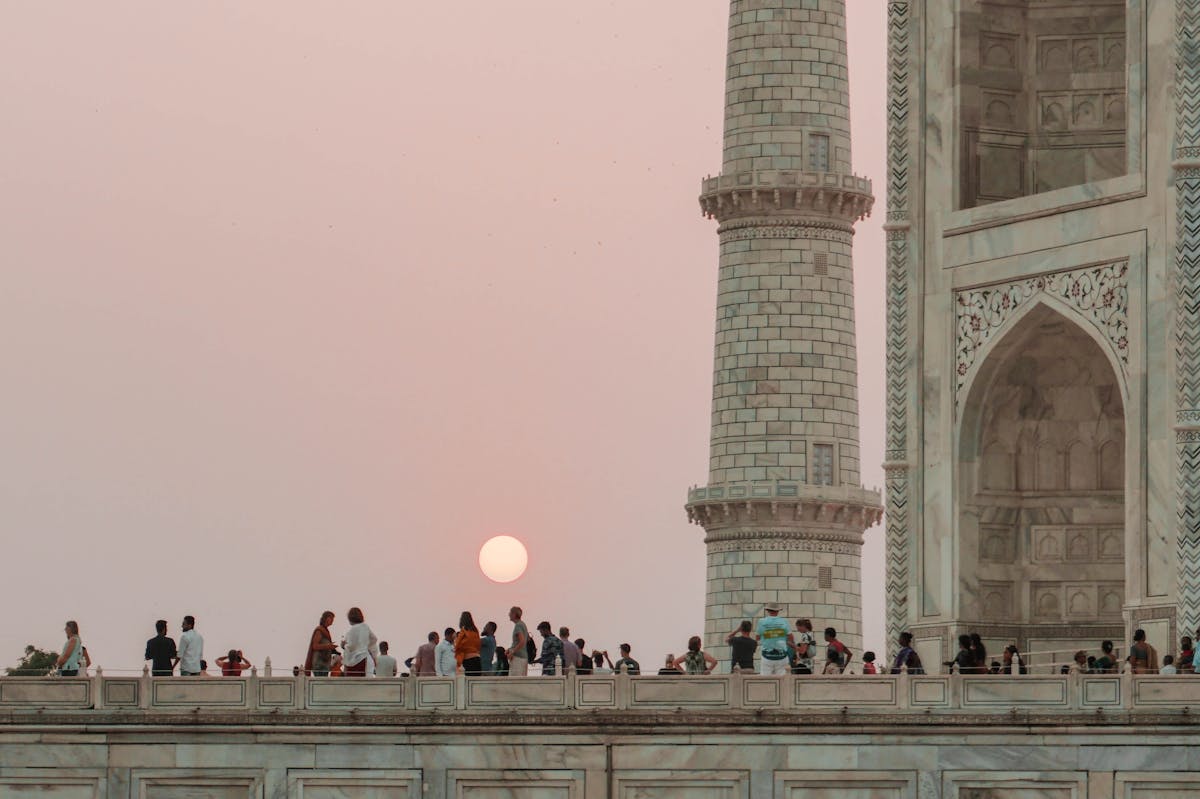
The building is made of Makrana white marble, which shines differently at sunrise, sunset and under the moon. Its inlay work (pietra dura) uses semi-precious stones like jade, turquoise and lapis lazuli brought from across Asia. It features hand carving and fine detailing, intricate lattice (jali) work, delicate Arabic calligraphy on the arches. It is said that more than 20,000 artisans, led by master architect Ustad Ahmad Lahauri, worked for two decades to complete it.
Symbolism in Architecture
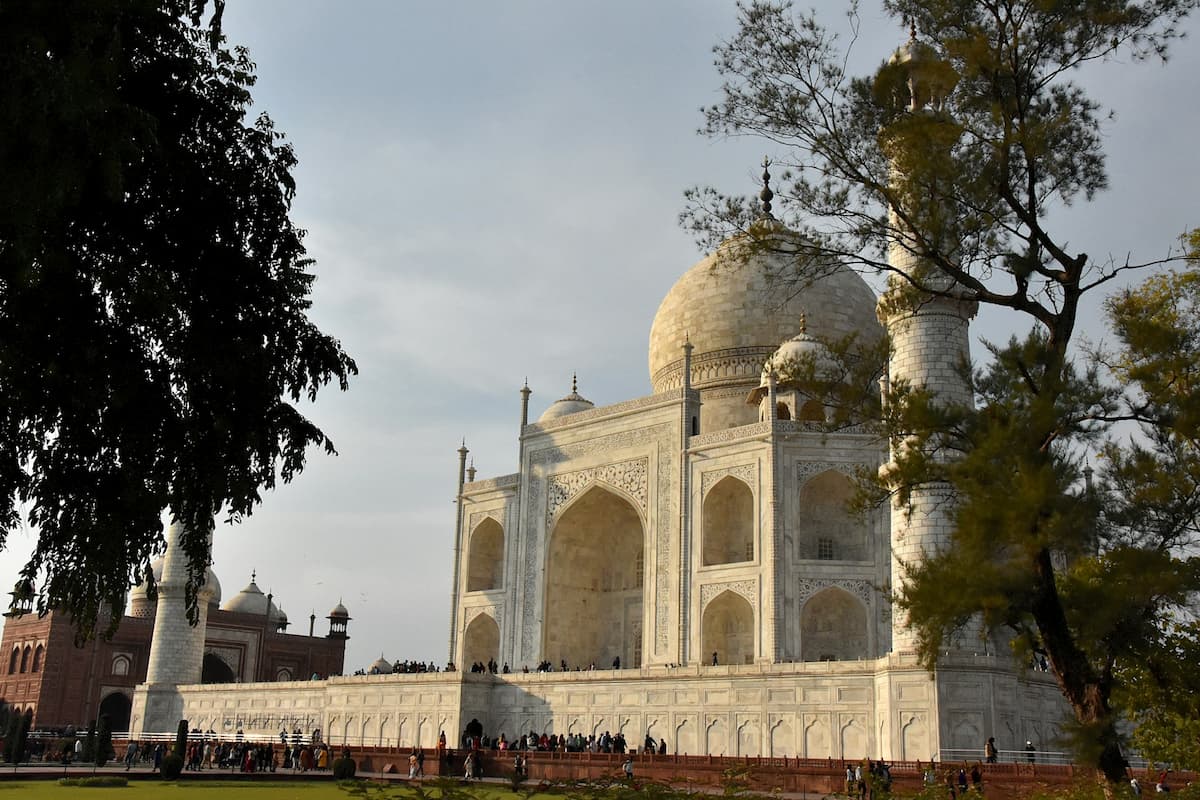
Each architectural element of the Taj Mahal is more than just a design – it is a thoughtful symbol carved with purpose. The central dome symbolizes the vault of heaven. A clever engineering touch to protect the central mausoleum from damage if nature ever shakes the ground. The reflecting pool reflects the mausoleum – a metaphor for eternal love.
17th-century engineering marvel
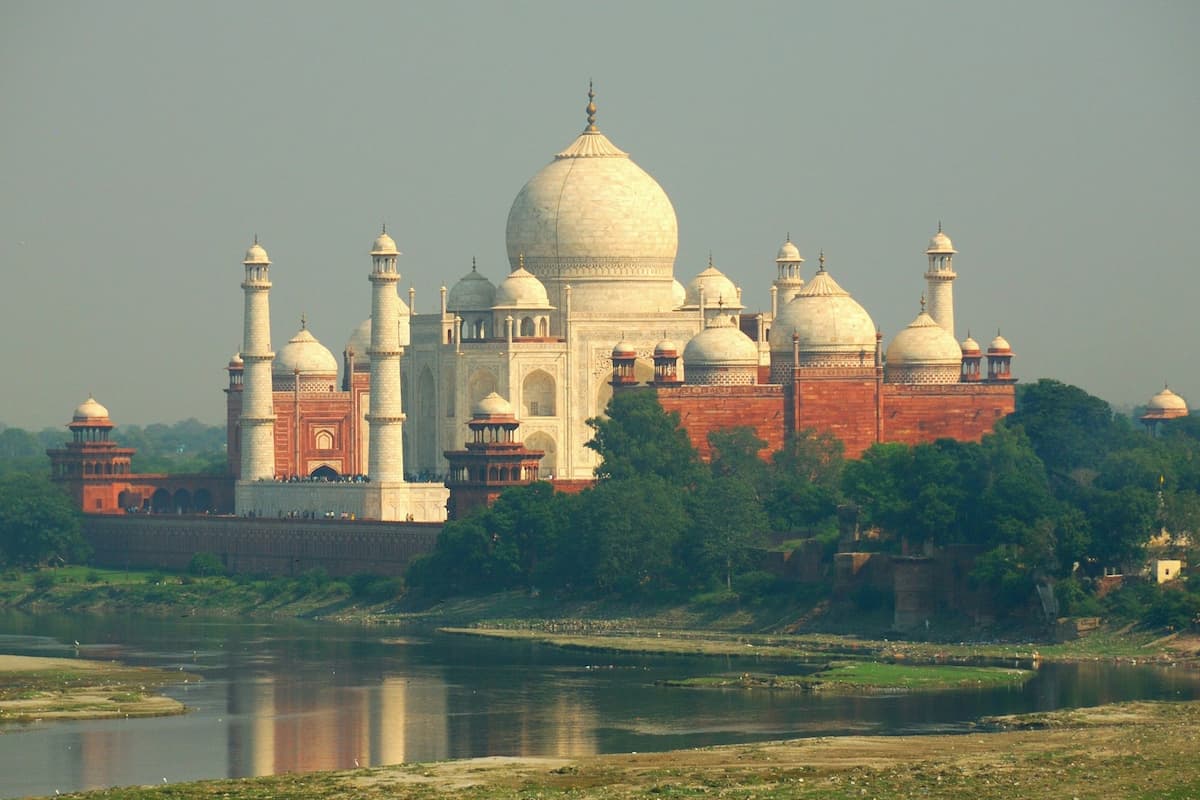
Despite being centuries old, the Taj Mahal has superb engineering:
Built near the Yamuna River, it stands on a system of wells and wooden foundations, which prevents collapse.
The minarets are tilted slightly outward for stability during earthquakes. The use of optical illusions – for example, the dome looks closer or larger depending on your position; clever scaling makes the calligraphy appear the same from top to bottom.
Interior details: Unearthly beauty
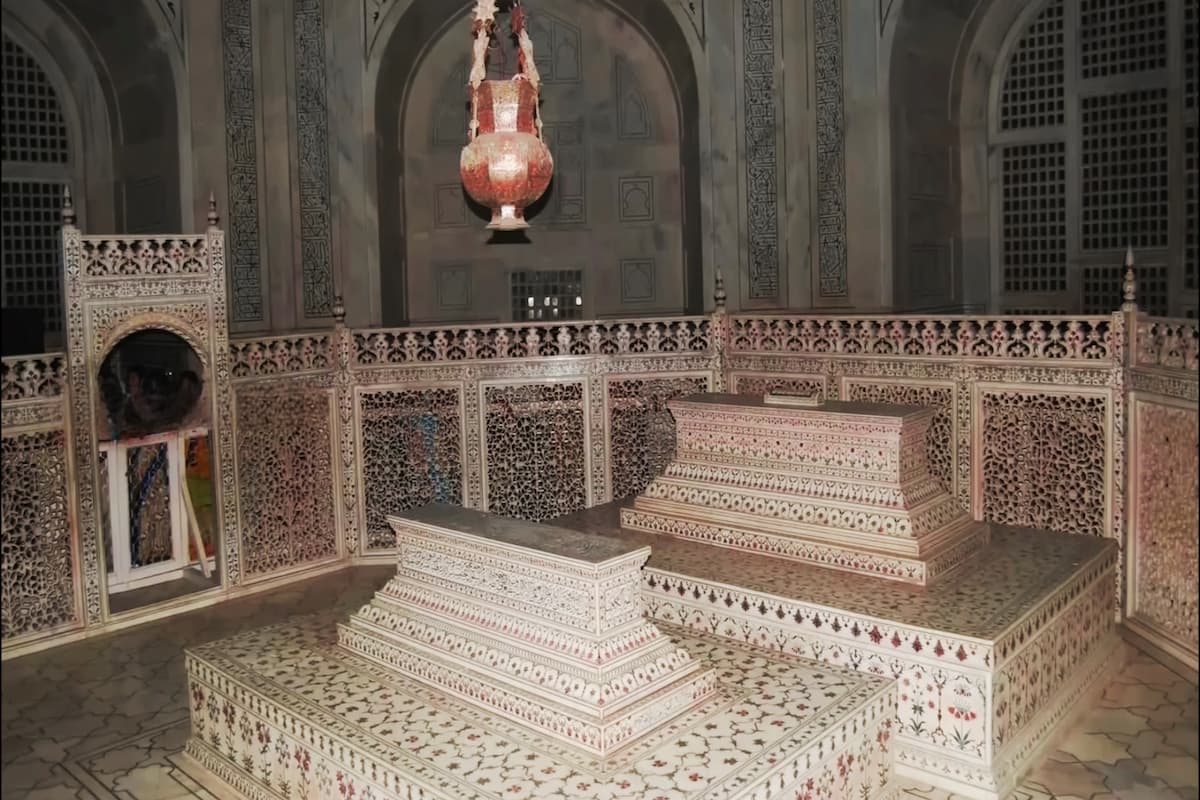
Inside the Taj:
You’ll find two mausoleums (Shah Jahan and Mumtaz), but their real tombs lie below ground, in quiet honour. The carvings of flowers and vines on the marble are so delicate they seem almost alive. The acoustic design creates a soft echo – even a whisper sounds sacred. The way sunlight irradiates the interior throughout the day – adds a mystical effect.
The Taj’s influence on global architecture
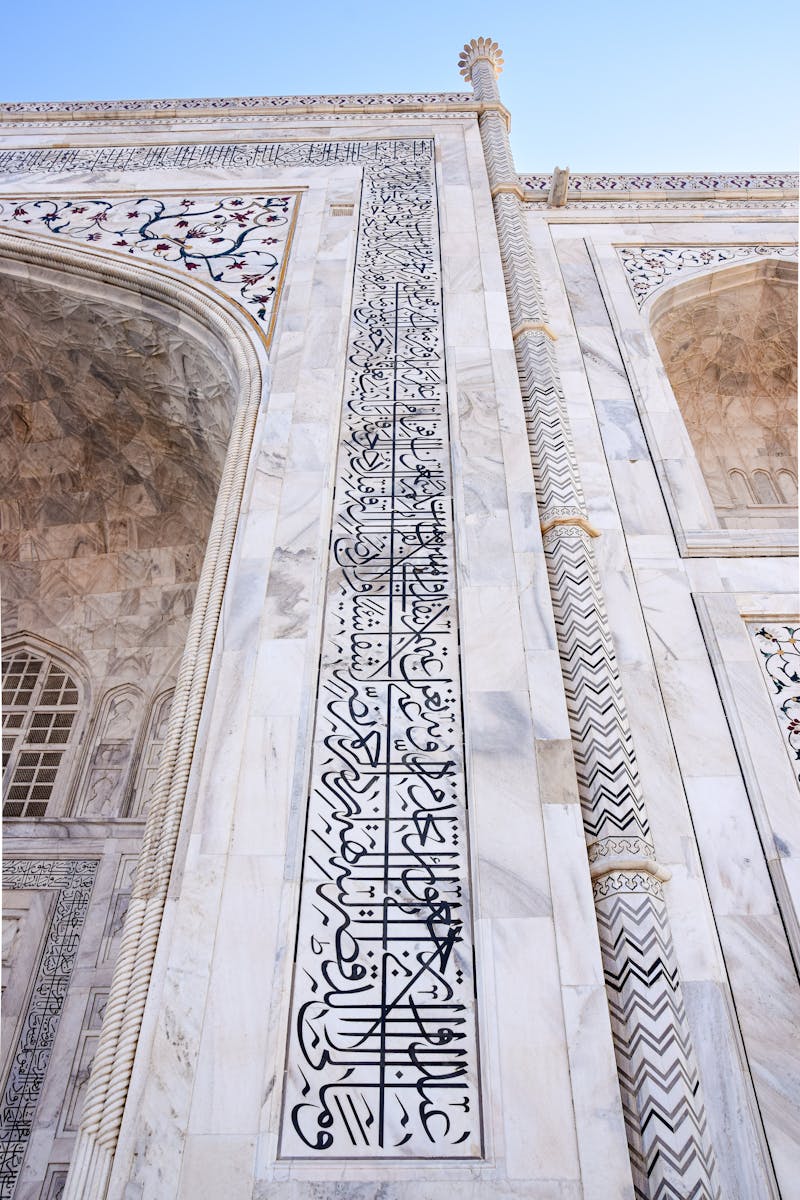
The Taj Mahal became a global icon of architecture:
It inspired the Bibi Ka Maqbara in Aurangabad. Echoes of the Taj can be seen in structures far from India. Its symmetrical layout and onion-shaped dome have become iconic and are used in other imperial and modern buildings.
Controversies and conservation
Some popular myths include:
The “Black Taj” myth: Shah Jahan planned a black marble replica across the river – there is no evidence of this. That workers had their hands chopped off – there is no historical evidence of this, but it is a widespread story. The real issue today is pollution and the drying Yamuna, which threatens its foundations.
🔹 Quick Fact Box:
Construction: 1632–1653
Architect: Ustad Ahmad Lahauri
Height: 73 metres (240 feet)
Staff: Over 20,000 artisans
Materials: White marble, precious stones
🔹 Quote:
A teardrop on the cheek of time.” – Rabindranath Tagore
Call to action:
Have you ever experienced the Taj Mahal on a moonlit night? Your Taj Mahal memories are worth telling – add it to the story below. Share your experience – we would love to hear your story!